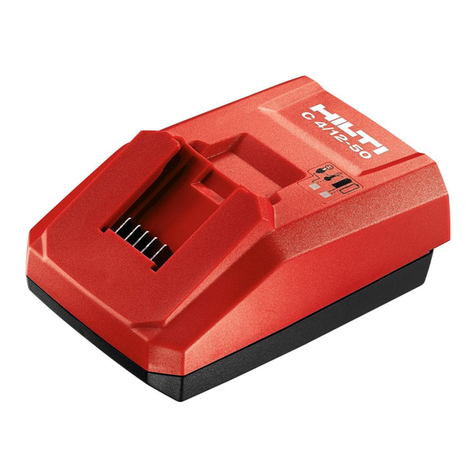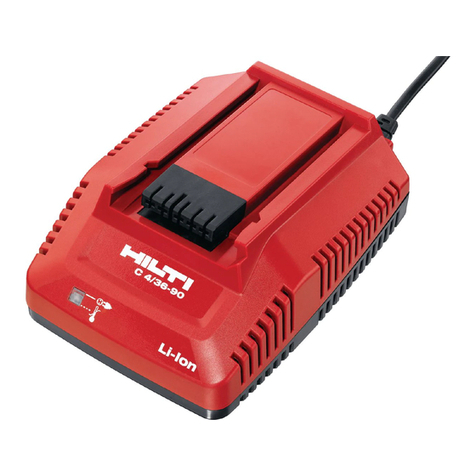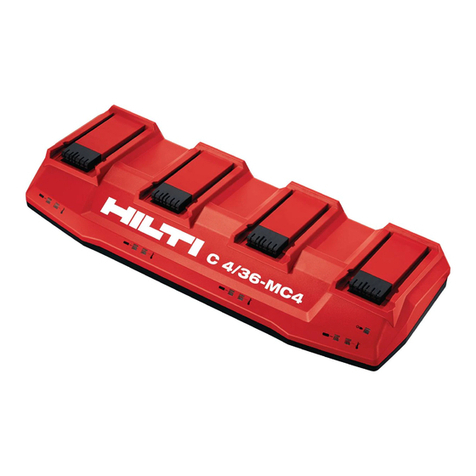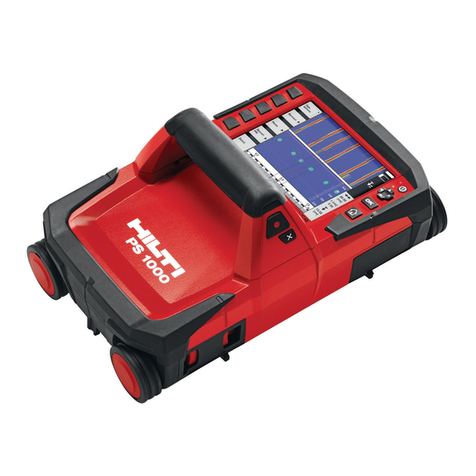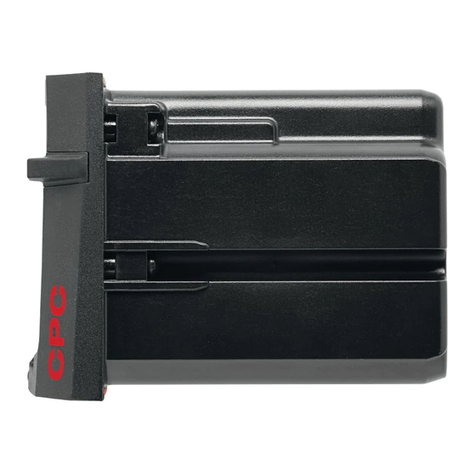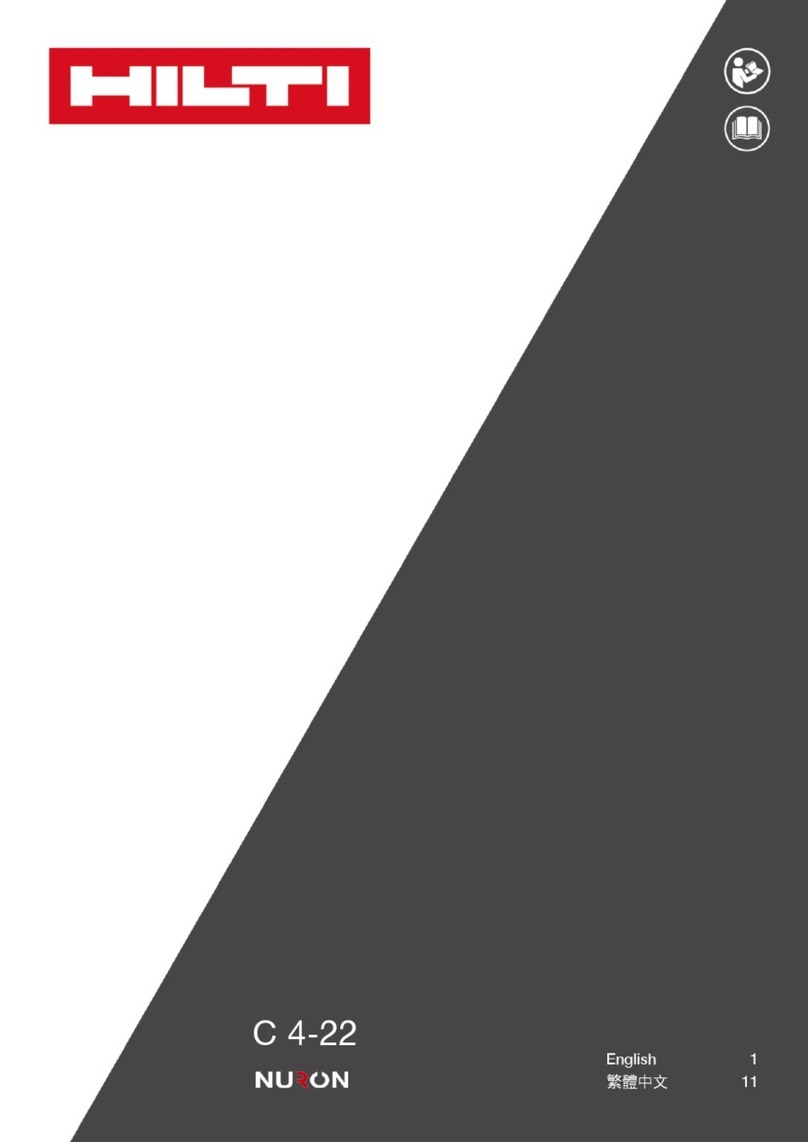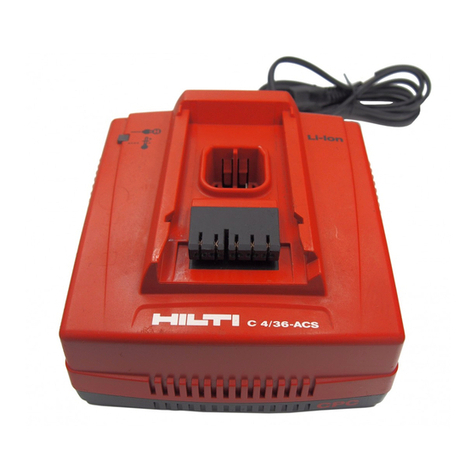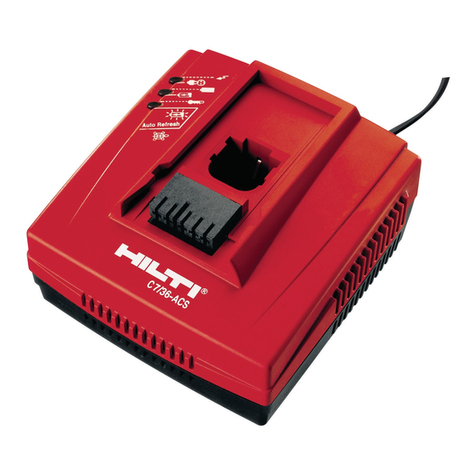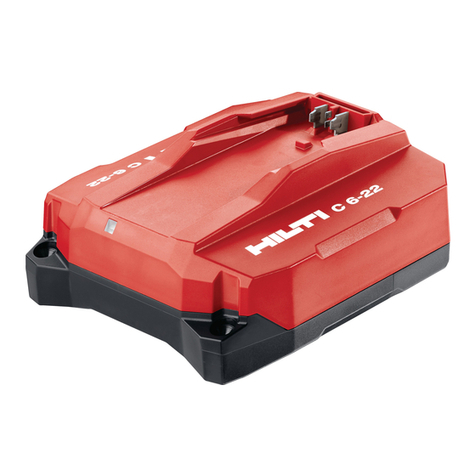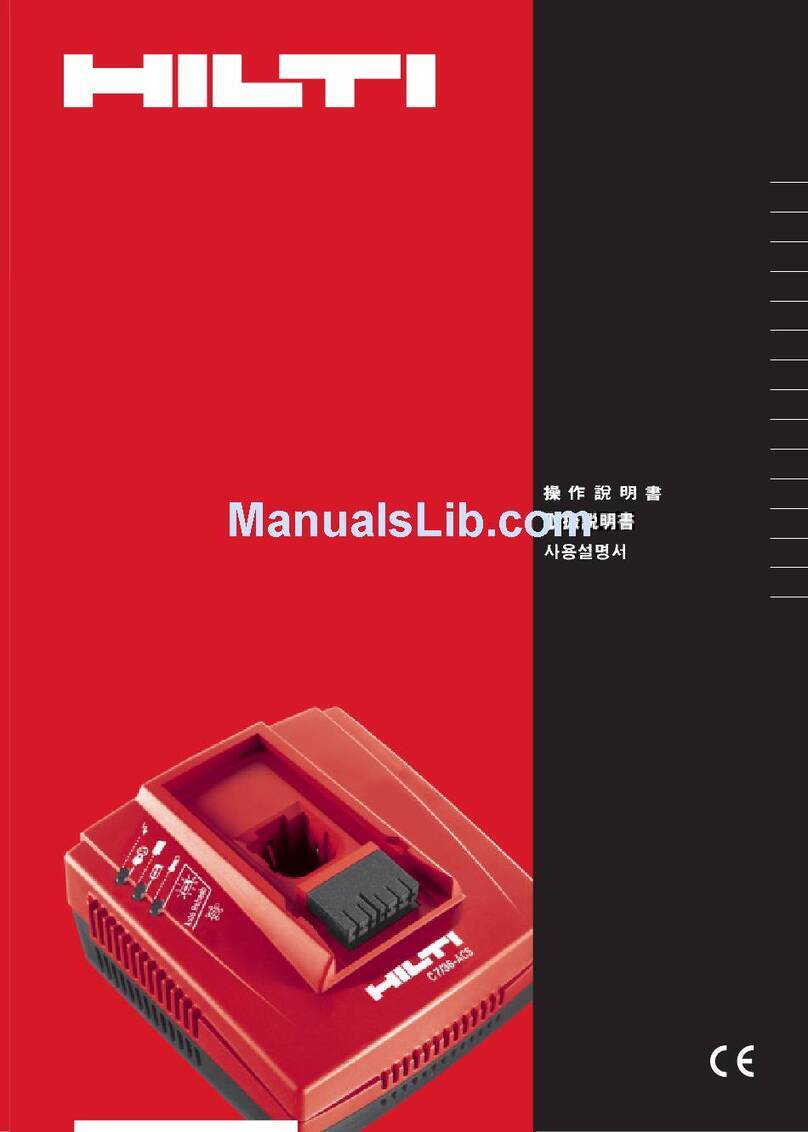
9
unfavourableconditions,dampnessordirtadheringto
thesurface of the charger may presentariskofelectric
shock.
Repairs of the charger including, in particular, replace-
mentofthe supply cord may be carried outonlyby the
manufacturer or authorised service centre using origi-
nal Hilti spare parts. Failure to observe this point may
result in damage or present a risk of accident. Conse-
quently, let only repair work of the charger be made at
a Hilti service centre or authorised Hilti repair centres.
7. Keep the charger and battery pack out of the
reach of children
Knowledgeoftheoperatinginstructions is a must if the
tool is to be used without injury or damage to persons
and / or product respectively.
8. Keep your work area clean and well lit.
9. Keep other persons away from the charger during
the operation.
Before use
Connect the charger to the mains supply.
– The mains voltage must correspond to the infor-
mation given on the rating plate.
ThegreenLEDmustlightconstantly. Ifitdoesnotlight,
proceed as follows:
– Check the mains supply voltage and the connec-
tion of the mains plug to the mains supply.
– Iftheconnectiontothe mains supply or the mains
supplyitselfisnotthe cause of the fault, bring the
charger to a Hilti service centre for repair.
Operate the charger only at a suitable location.
– The location for operation of the charger should
be dry, clean and cool, but not exposed to frost.
– The charger must be able to give off heat during
the charging procedure. Accordingly, the ventila-
tion slots must always be unobstructed.
Wall mount
– The mounting holes provided on the base of the
housing should be used if the charger is to be
mounted in a wall.
– Topreventthebattery pack falling out ofthecharg-
er, the charger must not be mounted on an over-
hanging wall.
– Checkregularlythatthechargerissecurelymount-
ed.
Operation
Insert the battery (SFB105, SBP10, SFB125, SBP12,
SFB121,SFB126,SFB150,SFB155,SFB180,SFB185)
inthechargingcompartment.Pushthebatteryintothe
compartment as far as it will go, until it engages. Take
caretoensurethatthe battery fits correctly in the charg-
ing compartment .
Thebattery will not suffer damage even when left inthe
chargeroveralongperiodoftime.Thetrickle charging
currentisregulatedtotwo levels for both NiCd and NiMH
battery packs in a different way.
NiCdbattery pack: When the charged battery pack is left
in the charger longer than 24 hours, the charging cur-
rent is greatly reduced.
NiMH battery pack: When the charged battery pack is
leftinthechargerlonger than 4 hours, the charging cur-
rentisgreatlyreduced.Thispreventsdamagetothe bat-
tery while maintaining its capacity.
The charger is only designed for charging the battery
types listed. It may not be used for charging other bat-
teries.Withotherbatteries,thetemperaturemonitoring
functioncannotoperatecorrectlyasthenecessarycon-
tactshavedifferentpositions.Achemicalliquidmayleak
from the battery if it is overheated.
Whenthebattery pack is damaged,liquidmay
leak from the battery. Do not touch this caustic chemi-
cal liquid!
Indicators
Green LED
– Lights constantly when the charger is connected to
the mains supply. The charger is ready for opera-
tion.
– When the LED blinks, the battery is not ready to be
charged. (Re-insert the battery. If charging does
not then begin, please refer to the "Care and main-
tenance"sectionoftheSF100-A,SF121-A,SF150-A,
SF180-A or SF4000-A operating instructions.)
Red LED
– Lights constantly: The battery is being charged.
– Blinks: The battery is charged.
Yellow LED
– Lights constantly: The battery is being charged in
conditioning charge mode.
– Blinks: The battery is too cold [approx. 0°C] or too
hot [approx. 60°C]. Charging does not take place.
The charger begins charging automatically as soon
as the battery reaches the required temperature.
Conditioning charge mode
Battery cells are subject to self-discharge. With older
batteries,therateofself-discharge of some of the cells
maybehigherthanthatofothers.Asconventional charg-
ersswitchoffwhenthe first cells have reached full charge,
the other partly charged cells do not receive the full
charge. The user becomes aware of this effect in the

